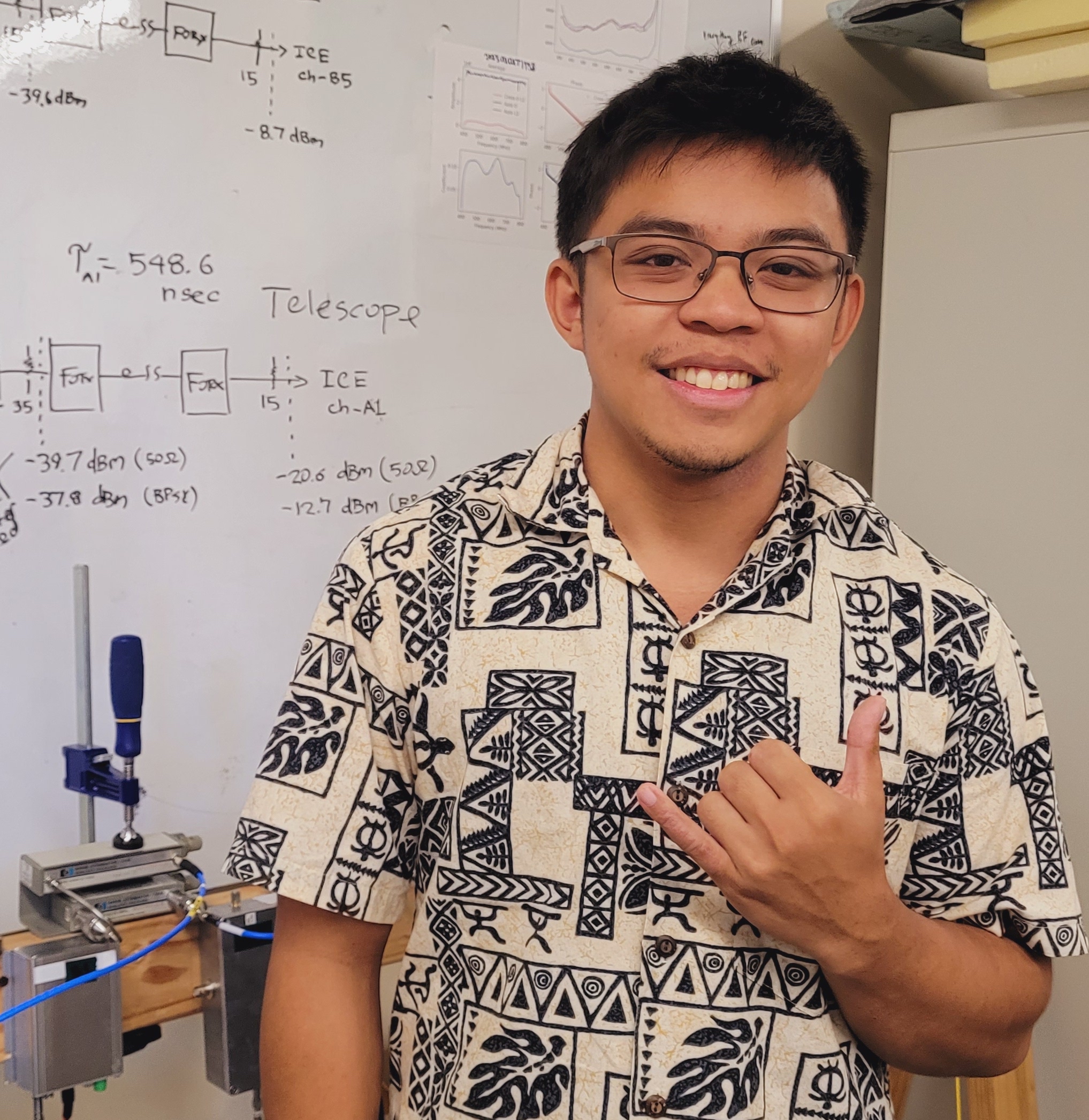
Anthony is a senior at the University of Hawaii at Manoa, completing his bachelor’s in Electrical Engineering with a focus on the electro-physics track. He was born in the Philippines, but grew up in Waipahu, Hawaii. He aims to become an electrical engineer where he can work on antennas and radio-frequency devices. In his free time he enjoys powerlifting.
Home Island: Oahu
High School:
Institution when accepted: University of Hawaii at Manoa
Akamai Project: Designing an Algorithm to Cancel LTE Interference Signals in Fast Radio Burst Data
Project Site: Academia Sinica Institute of Astronomy & Astrophysics, Hilo, HI
Mentors: Derek Kubo, Momi Jeschke & Geoff Bower
Project Abstract:
The Academia Sinica Institute of Astronomy & Astrophysics (ASIAA) has been working on building a radio telescope array in Pahala. The Hawaii outrigger is a new addition to a joint international astronomical effort to collect data on Fast Radio Bursts (FRBs). FRBs are radio pulses ranging in length from a fraction of a millisecond to 3 seconds. FRBs are quite significant because they can produce the energy equivalent to the sun’s annual output in a single short burst. It is still unknown what causes FRBs to occur; one common hypothesis is that FRBs are the result of neutron stars collapsing, while another is that the FRBs are caused by magnetars (neutron stars with extremely strong magnetic fields). Thus, the goals of the new Pahala array are to receive and collect astronomical radio data, identify FRBs, and ultimately attempt to localize the origin of the bursts. However, an obstacle at the Pahala site is significant LTE radio interference from cellular towers spanning approximately 730–770 MHz, which lies within the 400–800 MHz bandwidth used for capturing FRBs. The purpose of this project is to design an algorithm that will create a signal equal in amplitude to the interference signal but with opposite phase, so as to cancel out the LTE interference. This anti-signal will suppress the interference so that FRBs will become distinguishable within the telescope data. The algorithm was written in Matlab, utilizing a cross-correlation function to determine the delay between the telescope signal and the reference signal (replicating an antenna pointed directly at the LTE transmitter). The algorithm then scales the LTE signal and removes it from the telescope signal, leaving only the FRB signal. Testing the algorithm on Matlab Gaussian Noise generated data achieved 99.6% success, or 24 dB of suppression, which is sufficient but shy of the goal of 30-dB suppression.